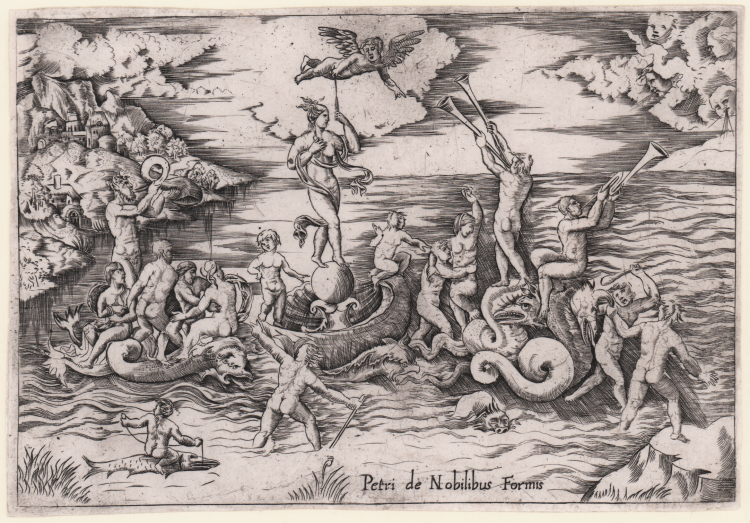




| Reference: | S32500 |
| Author | Anonimo |
| Year: | 1500 ca. |
| Measures: | 175 x 120 mm |



| Reference: | S32500 |
| Author | Anonimo |
| Year: | 1500 ca. |
| Measures: | 175 x 120 mm |
Engraving, 1500 circa, inscribed at the bottom of the image, towards right 'Petri de Nobilibus Formis'. After Raphael.
Example of the second state, with De Nobili’s address.
A very good impression, printed on contemporary laid paper, trimmed close to platemark, small repaired area at the upper left corner, otherwise in very good condition.
The scene depicts Venus riding in triumph on a shell, surrounded by sea-creatures.
This work is extremely rare; the only example without the address of De Nobili is listed by Bartsch.
We find only three copies of the second state, respectively, in the collections of the Ashmolean Museum, Oxford; the British Museum and the National Library of Spain.
The designer and the engraver of this crude plate remain unidentified. Bartsch attributed the engraving to the school of Raimondi; the Ashmolean Museum lists it as anonymous but "after Raphael"; the British simply as anonymous, while the Library of Spain indicates Raimondi as inventor.
The draughtsmanship and technique of this print are very weak and it is unlikely to be by an engraver directly associated with Raimondi.
Pietro De Nobili was a print dealer and publisher in Rome, active in 1580-85. His most important work was a reprint of a World map ascrived to Taddeo Crivelli or Arnold Pannartz - 1480 circa - now in the Newberry Library in Chicago. (Campbell, Earliest printed maps (1987), no. 2).
So could be possible that De Nobili found some plates of the end of XV century.
A very good example of this rare and important work.
|
TIB 2801.043 S2; Bartsch XV.38.7.
|
Anonimo
|
TIB 2801.043 S2; Bartsch XV.38.7.
|
Anonimo